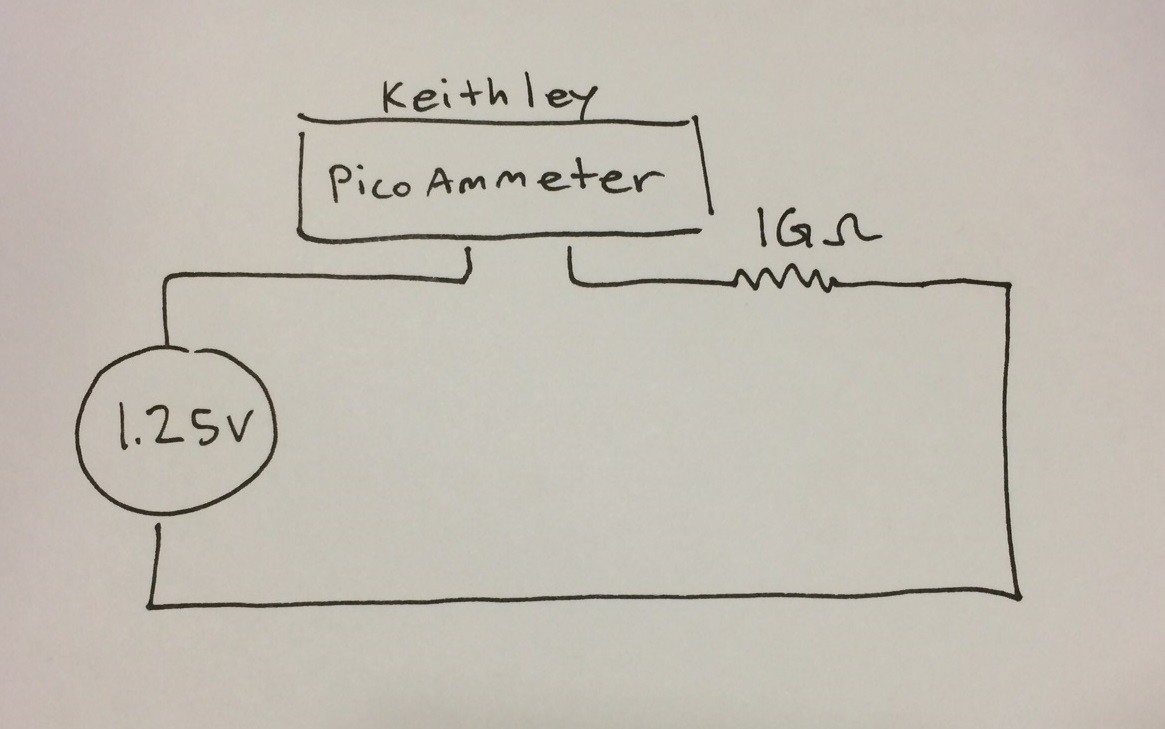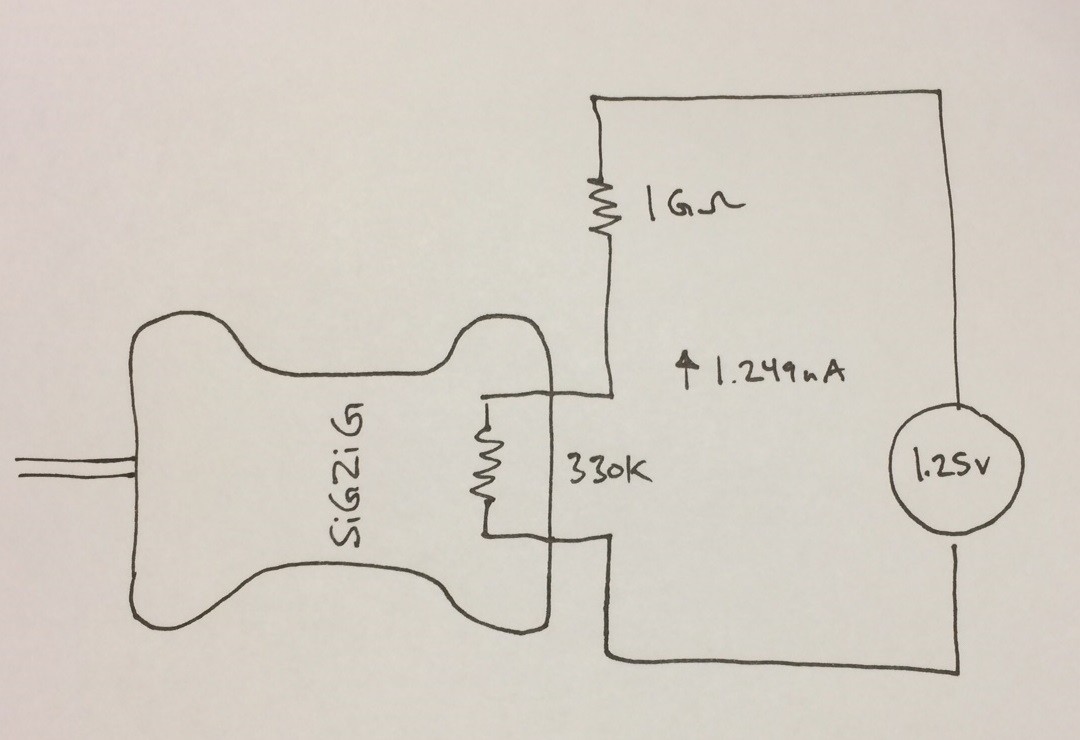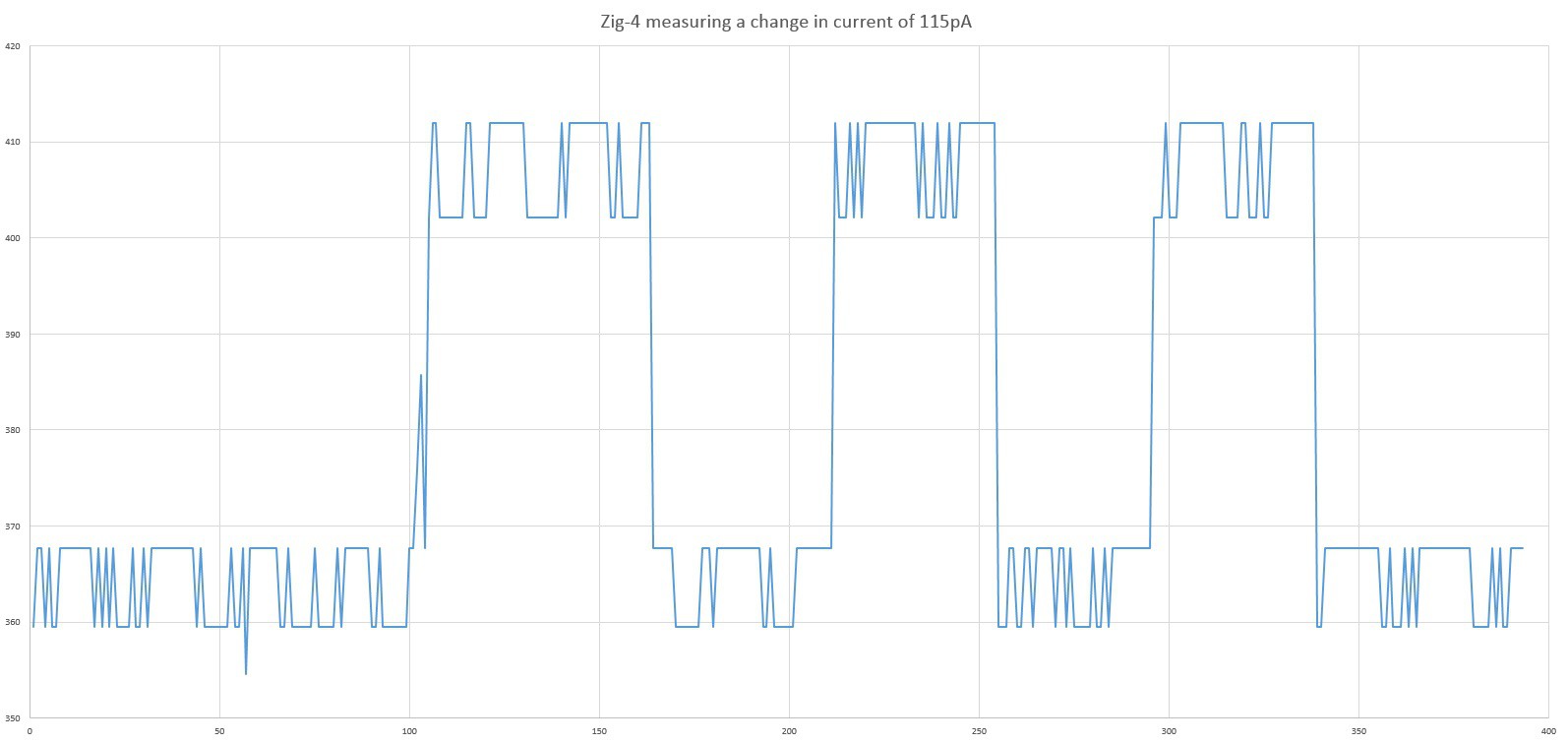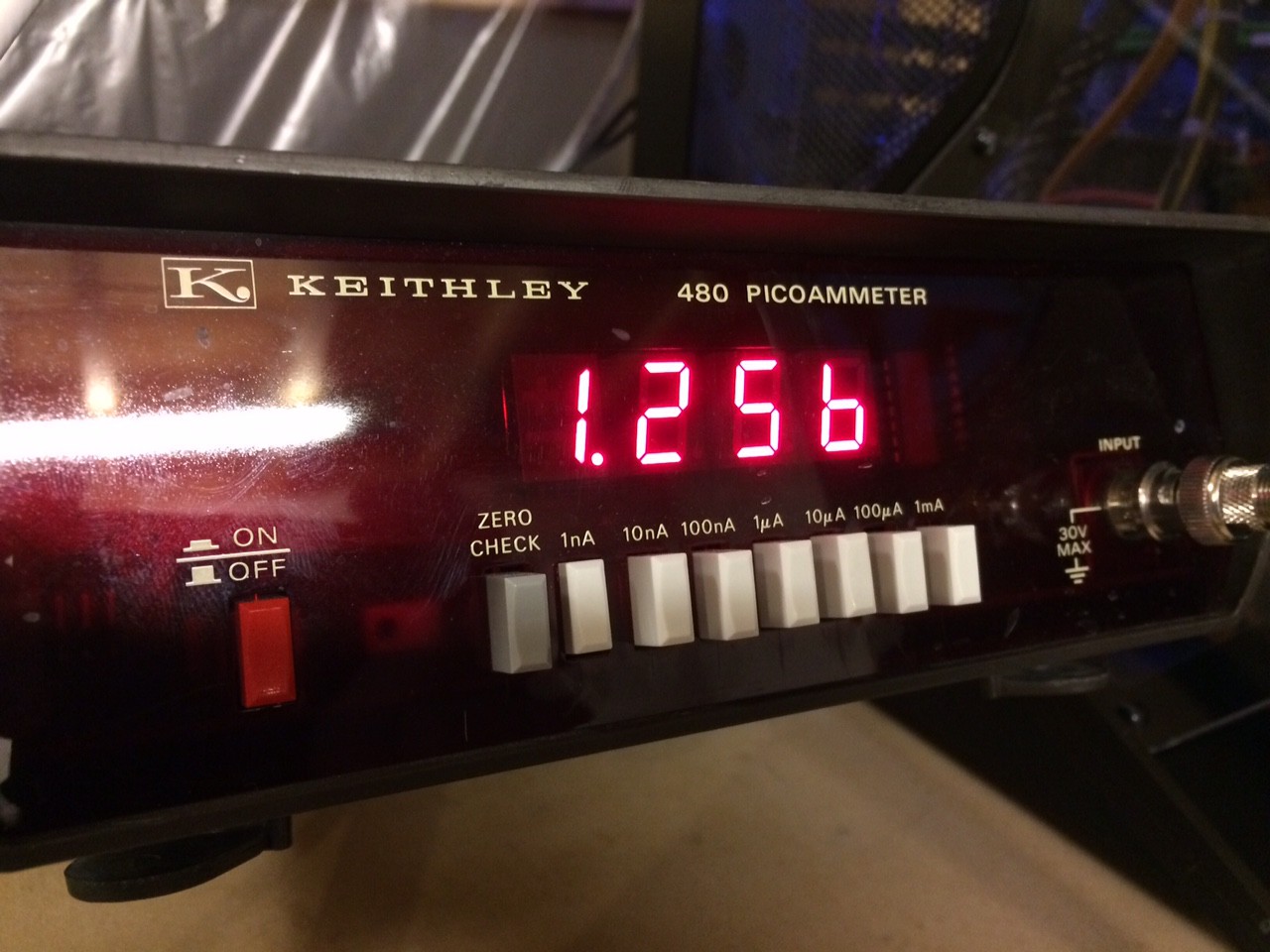Input impedance on measurement equipment is usually kept as high as it can in an effort to prevent loading down the signals the equipment is measuring. For example most general purpose digital multimeters aim for an input impedance of at least 1M ohm. The Zig-4 has a lower input impedance of 330k ohms but this is still high enough for many/most situations. That being said it is still important to understand input impedance and its affect on your measurements.
In this post I thought it would be fun to actually take advantage of the 330k input impedance of the Zig-4 as a sort of low current sensing.
The goal: To see if we can use the Zig-4 to detect a change in current in the very low nA range.
Even though most everything can be calculated, I thought it would also be nice to back up some of the calculations using actual measurements. I wanted to use a recently acquired Keithley 480 Picoammeter and on the lowest setting so the first order of business was generating a really small known current.
Using a 1G ohm resistor and a 1.25V voltage reference we can generate a current of 1.25nA.

I then added a 100M ohm resistor in series with the 1G ohm resistor effectively lowering the current to a calculated 1.136nA
Now lets swap out the Keithley 480 picoammeter with the Zig-4 and do the same change in current to see what kind of signal we get. The current in both cases will be a little lower because now there is the additional 330k of the SiGZiG.


So by using the input impedance of the Zig-4 to our advantage we can actually use it to monitor small changes in current down to the sub nA range. In the case above we were able to clearly pickup a change in current of only 115pA (113.5pA to be exact).
 Sigzig
Sigzig

Discussions
Become a Hackaday.io Member
Create an account to leave a comment. Already have an account? Log In.